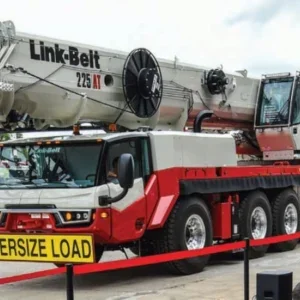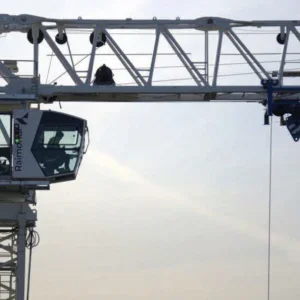For many years Wilbert Kranservice was a good and loyal customer to MAN Wolffkran. It built up a rental fleet of more than 200 top slewing Wolff tower cranes. Then in 2001, with the market for new tower cranes in Germany and Asia in the doldrums, MAN Wolffkran took the step of moving into the rental business itself– in competition with customers such as Wilbert. The way Wolff sees it, it had little choice. Hardly anyone was buying tower cranes. But it was a move that was not universally welcomed.
Wilbert was in a quandary. What to do?
‘When we lost Wolff we visited all the other manufacturers,’ says sales director Dietmar von Bernuth. ‘Every crane we saw, we thought, this is not the crane we want or need. Because the market is so bad in Germany we needed something with an edge.’
When it was first suggested that Wilbert should make its own cranes, the idea was a very tentative one, and possibly not entirely serious. But the more the guys thought about it, the more the idea developed. Von Bernuth had worked at Wolff for 20 years, from 1970 to 1990, so knew something about the manufacturing side of the business. Crane designer Ewald Kloos was looking to leave Wolff and set up on his own. The approach from Wilbert was just what he needed to persuade him that it was safe to make the jump. Kloos designed a prototype crane for Wilbert that was different indeed. The prototype unit was built last year and has been working without any problems, says Von Bernuth, on a commercial development project in Cologne since August 2003.
Wilbert’s crane, the flat top design WT 200, is in the 200tm class. It can be used with jib lengths ranging from 30m to 65m in 2.5m steps with five different jib sections. When fitted with 30m of jib it can lift a maximum of 7.8t all the way along. With 50m of jib it can lift 7.2t out to 30m and 4t at jib end. With full 65m of jib it can lift 4.6t out to 30m and 1.7t at jib end.
The mast is in three sections that telescope. It arrives on site as a single compact 14.5m long unit and can then be raised up, telescopically, using an assist crane, in increments of 1.15m up to a maximum height of 36m. It is this telescoping tower that is key to the concept.
According to Von Bernuth, the big advantage of the Wilbert crane is that the whole jib and counterjib, with all parts fixed on the counterjib, can be transported on just two trucks, compared to the five or six trucks that a similar sized Wolff or Liebherr machine requires. Quick to transport and quick to erect, Wilbert is targeting its crane particularly at cramped urban construction sites.
Satisfied with the prototype, Wilbert Turmkrane GmbH has now begun a full manufacturing programme at its facility in the town of Stromberg. Steelwork is supplied by subcontractors in Poland and the Czech Republic and all other parts come from German suppliers: Siemens and SEW supply the frequency regulated drives and controls, hoists and gears come from the same supplier that Wolff uses, and slew rings come from Rothe Erde.
The second unit was completed just last month and Wilbert plans to continue at a rate of just one unit a month.
Even though it had no stand at the show, the Bauma fair this year provided a meeting place for Wilbert to gather orders. It has two orders from other German rental companies that also used to be Wolff customers. According to plans, the first delivery will be to a Terex Peiner dealer in Switzerland next month.






